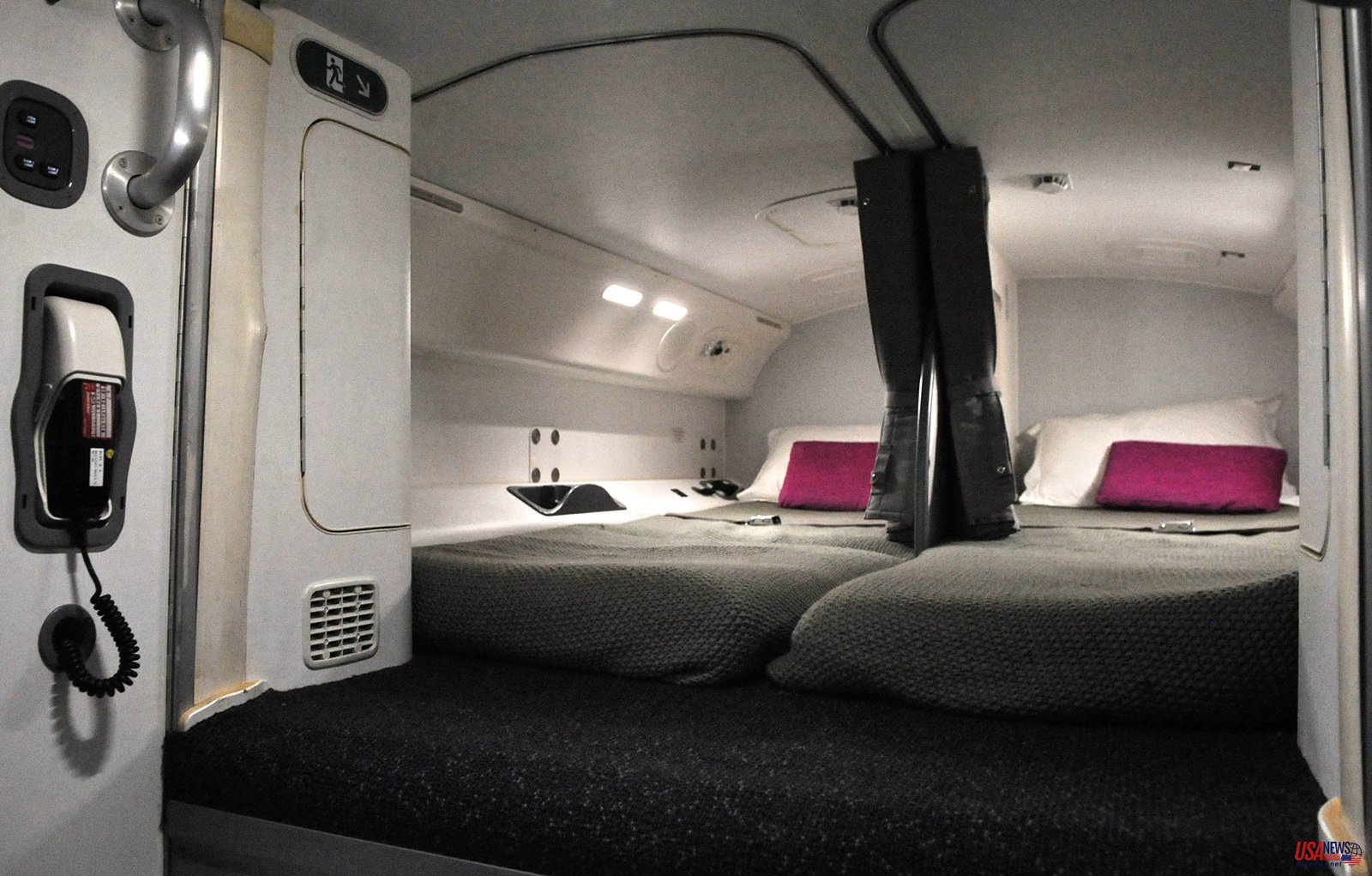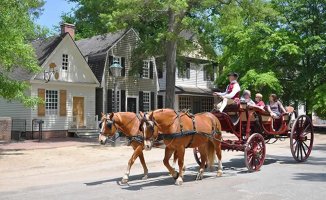Widebody aircraft have some hidden areas where pilots and cabin crew can rest after long flights. They are well hidden and cannot be accessed by passengers.
These are called Crew Rest Compartments, and their locations on the plane vary.
They are found in the upper fuselage, above the main cabin on newer aircraft like the Airbus A350 or the Boeing 787. They can be found in the cargo hold, or in the main cabin on older aircraft.
They are usually in pairs. One for pilots is usually located above the cockpit, with two bunks and a recliner, while the other for cabin crew contains six bunks or more. It is usually placed above the aft gallley, which is the area at the back of a plane where food and drink preparations take place.
Like a capsule hotel
The Federal Aviation Administration sets the parameters. However, airlines have the right to design the crew rest areas. It mandates, for example, that the crew rest areas should be "in a location where intrusive noise, odors and vibration have minimum effect on sleep," and that they must be temperature-controlled and allow the crew to adjust lighting.
"Bunks" (or any other surface that allows for a flat sleeping posture) must be at least 78 inches by 30 inches (198x76 centimeters). They also need to have at least 35 cubic feet or one cubic meter of space. A communal area must be available for changing, entering and leaving that has at least 65 cubic feet.
The final result is very similar to a Japanese capsule hotel. It has a small, dark, and cramped sleeping area with light and power outlets.
Susannah Carr, an attendant at United Airlines, says that they can be very comfortable on Boeing aircraft, including the 787 and 777.
They have a padded bed, an air vent to circulate the air and temperature controls to make it warmer or colder, and linens that are similar to those used on international flights. They are great, but they may be too tight for someone 6 feet 4 inches tall.
Are they any better than a business seat or a first-class seat?
Carr says, "In some ways yes and in other ways no." Carr says that the bunks are sometimes wider than first-class and that depending on which aircraft I fly, I have more legroom. It's a bunk so you don’t have the same head space as in the cabin. You also don’t have privacy. You might feel claustrophobic if you are. It's an airplane so there is only so much room to store things. They make the most of every inch they have up there.
Hidden away
Carr says that crew rest areas are not meant to attract too much attention from passengers.
"I won’t go into detail about how we access it, but it is secure, I will tell you that. Sometimes people mistakenly think that it is a bathroom door. We show them the way to the actual toilet instead.
There is usually a landing area behind the door with a ladder leading upstairs.
Carr says that the bunks can be opened on one side or both, so it is possible to crawl in.
A staircase could be used to descend on older aircraft like the Airbus A330. On older aircraft, such as the Boeing 767 and Airbus A330, the crew rest area is located in the main cabin. They are simply recliner seats with curtains.
They are heavy curtains that block out light and sound. However, this is not the case if there's an active crowd or a child who is upset. There have been instances when passengers opened the curtains to look for something or think they would be going into the galley.
Unsurprisingly, flight attendants prefer overhead bunks over curtained seats. However, the upgrade is also beneficial for airlines who don't have the luxury of giving up cabin space that could be used to accommodate passengers.
Seniority order
Long-haul flight cabin crews spend at least 10% of their time in rest areas.
According to Karoliina Aman (flight attendant at Finnair), the average flight time for long-haul flights is 1.5 hours. She works on Airbus A330s and A350s. However, this can vary depending upon the airline and flight duration -- rest time may extend to several hours.
She says, "Since there is no private space in the plane for lunch or coffee breaks," she adds.
This is when we stop answering passengers' calls and do other tasks, but instead rest and allow our feet and minds to recharge. This rest allows us to remain alert and ready for anything.
However, not everyone can sleep in the bunk at once.
"Usually, I use my rest on an outbound flight to Helsinki to read or listen to audiobooks. I'm coming from home so I'm well rested. On an inbound flight to Helsinki, however, you might have sleepless nights ahead of you. I have trouble sleeping in Asia so it is possible that you will fall asleep during rest. Aman says that sometimes it can be very difficult to wake up from the deep sleep if your brain switches to night sleep mode.
Carr says that jet lag can be a difficult beast. "Sometimes my body can relax and I can fall asleep, but other times it's not ready for a nap." We can use our phones while on a break. This allows us to watch movies on our phones or read books on them.
The rest areas are closed during takeoff, landing and taxi. They are used according to shifts overseen and controlled by the cabin manager, or chief purser in aviation lingo. This is the cabin crew member responsible for all other cabin crew members and oversees operations onboard.
The person is usually allowed to use a bunk located near the entrance to the rest areas. They also have access to an intercom to communicate with pilots and other crew members.
Carr explains that everything in the industry is seniority-based. This includes the schedules you fly, the routes you can hold and your days off. "The more you stay there, the better the perks are." Carr explains that one of the perks is the ability to pick your crew's break time. We do this by seniority order. The person with the longest tenure gets to decide if they want the first or second break. After that, you move through the list until everyone has their breaks.
Piloting perks
The cockpit is near the rest area for pilots. It is separate from that of the cabin crew. There can be up to four pilots depending on the flight duration. However, two pilots will always be in the cockpit. The pilots' rest area has only two bunks (or one on older aircraft), but it also includes an in-flight entertainment seat that the cabin crew does not have. The compartments are very similar.
Aleksi Kuosmanen (Deputy Fleet Chief Pilot at Finnair) says, "I usually sleep pretty well there."
Kuosmanen has flown on both A330 and A350 aircraft and prefers the A350's rest area. It is located higher than the main cabin and above the forward galley. It has great curtains, it can adjust the temperature very well, it has great ventilation, and is more soundproof. It's quiet and comfortable, you don't hear any of the happenings in the galleys.
You might be able to spot a rest area while on long-haul flights.
Be aware that crew members may not be happy to show passengers around as there is no passenger access to rest areas. Carr says, "It's a bit like Disney -- the magic remains behind closed doors."
You don't necessarily need to know that your flight attendants get shuteye. But you will be happy when they come up after their little cat nap fresh as a daisy.













